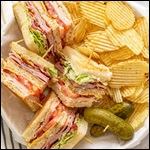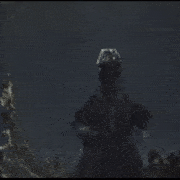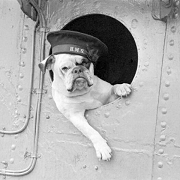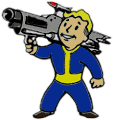|
No read, just post
|
|
|
|

|
| # ? Apr 25, 2024 05:11 |
|
Nenonen posted:This makes me think - when was the last time a head of state was killed in combat? I think the President of Chad wrote a research paper on that, maybe he knows?
|
|
|
|
Fish of hemp posted:The virgin Chad president and the chad Chad rebels. AmbassadorofSodomy posted:I hear the motto of the Chadian army is: viens à moi mon frère
|
|
|
|
6.2 Countermeasures (Ripped from A Radar History of World War 2 by Louis Brown) Part 1/? Watson Watt's gigantic CH towers offered mute testimony to early concerns about radar countermeasures. The steel transmitter towers had many antenna configurations during the course of the war, with horizontal dipoles mounted along the sides in the beginning. The radiation pattern from the side-mounted dipoles was sufficiently poor that curtain arrays became the standard transmitter antenna for the later, West Coast, stations. Many of the initial, East Coast, stations were re-fitted with one or at most two curtain arrays hung between the fortuitously placed towers that had resulted from the original CH design of four operational frequencies. Owing to the narrow bandwidth of these antennas, extra arrays had to be available for the rapid changes of frequency needed to evade jammings. (Jamming is an enemy transmission on the radar frequency of a signal modulated to fill the operator's indicator with obscuring traces.) This fitted well with the need to have spare capability in the event of units not functioning, either from malfunction or enemy action. Multiple wooden receiver towers mounted dipoles of wavelengths corresponding to those of the transmitters. A design anticipating countermeasures was but one characteristic of British radar that set it off from early American and German equipment: it had been intended from the first to be part of an air-defense system. Colonel Martini attempted to jam CH during the Battle of Britain from ground stations across the Channel but with little success. Fighting the radar war required a knowledge of what devices had to be countered, which became the province for a new specialty, electronic intelligence. The information so gained then went to the laboratories where equipment was designed to thwart what the enemy had brought forth. Destruction of the enemy radar was the natural and traditional way of dealing with any kind of new weapon, but countering it electronically was often easier - and somehow seemed more appropriate, less brutish way for the engineers to fight - and if one was clever, the enemy might be fed choice bits of misinformation and thereby led astray. Use of radio countermeasures slacked during 1941 after the lessening of night attacks on England. Bomber Command had begun its attacks on Germany but was still unaware of any serious radar threat and had no interest in electronic warfare. As RV Jones' scientific intelligence began piecing together the dangers of German radar through the actions of 80 Signals Wing and the RAF Y-Service, the need for countermeasures became more apparent to the people at TRE. It was the knowledge that the Channel Dash of the Scharnhorst and Gneiseneau on 12 February 1942 had been aided by Martini's jamming of the CD and CHL equipment expected to monitor navigation that grasped the attention of the technical people on both sides and showed them what was coming. The radar-intelligence reason for the Bruneval raid that followed on 27/28 February served to emphasize matters. An official organization, the Radio Countermeasures Board, met for the first time on 24 March with all manner of service organizations represented, including one from the United States. It was only an organizing group; TRE had to do the work.
|
|
|
|
Nenonen posted:This makes me think - when was the last time a head of state was killed in combat? I may have mentioned this ITT before, but Henry II of France died in a jousting accident during a festival celebrating a peace treaty.
|
|
|
|
Vincent Van Goatse posted:I may have mentioned this ITT before, but Henry II of France died in a jousting accident during a festival celebrating a peace treaty. And to clarify something up thread, that yes, there is a Nostradamus quatrain that is interpreted to have predict his death, century 1 - 35.
|
|
|
|
Nenonen posted:This makes me think - when was the last time a head of state was killed in combat? Gadaffi if that counts? Captured live on camera hiding in a sewer tunnel after a short fight, and killed a few minutes later in the back of a truck.
|
|
|
|
I may have mentioned this ITT before, but Henry II of France died in a jousting accident during a festival celebrating a peace treaty.
|
|
|
|
Beamed posted:Gadaffi if that counts? Captured live on camera hiding in a sewer tunnel after a short fight, and killed a few minutes later in the back of a truck. This all already happened a couple of pages ago, but Gadaffi wasn't really fighting back and so it doesn't count as combat. The answer appears to probably be Emperor Yohannes IV of Ethopia in 1889 https://en.wikipedia.org/wiki/Yohannes_IV Some people might say El-Ouali Mustapha Sayed in 1976 but he arguably wasn't a head of state. He was the president of the Sahrawi Republic but at the time it was a shadow government, largely within refugee camps, that wasn't recognized as a state, and only a few dozen countries recognize it today. Francisco Solano López of Paraguay in 1870 was the last head of state to die in hand-to-hand combat, as well, so points for that. Yohannes was shot. gohuskies fucked around with this message at 01:08 on Apr 23, 2021 |
|
|
|
The last page of this thread had me going for a bit.
|
|
|
|
Y'all should stop making repetitive jokes and talk about actual milhist like the Battle of the Isonzo.
|
|
|
|
Neophyte posted:Y'all should stop making repetitive jokes and talk about actual milhist like the Battle of the Isonzo. 
|
|
|
|
Jobbo_Fett posted:The radar-intelligence reason for the Bruneval raid that followed on 27/28 February served to emphasize matters. I first learned about this one from a YA book I read back in my early teens. Probably one of the bits that really got me interested in it all.
|
|
|
|
Neophyte posted:Y'all should stop making repetitive jokes and talk about actual milhist like the Battle of the Isonzo. Indeed, an important victory for Theodoric.
|
|
|
|
gohuskies posted:This all already happened a couple of pages ago, but Gadaffi wasn't really fighting back and so it doesn't count as combat. The answer appears to probably be Emperor Yohannes IV of Ethopia in 1889 https://en.wikipedia.org/wiki/Yohannes_IV I mentioned Salvador Allende. Last heard of in 1973 on the radio with literally gunfire in the background promising to fight to the end. Probably committed suicide with an AK, may have been shot, either way died while combat was happening.
|
|
|
|
Neophyte posted:Y'all should stop making repetitive jokes and talk about actual milhist like the Battle of the Isonzo. Hey so serious question (don't laugh) why didn't Italy try and force a crossing of the Adriatic instead?
|
|
|
|
Lawman 0 posted:Hey so serious question (don't laugh) why didn't Italy try and force a crossing of the Adriatic instead? The Austro Hungarian navy was quite big and relatively effective and only just about smaller than Italies (France's navy was even smaller than both). Italy didnt really have the ability to force it without significant Royal Naval support and the RN was busy elsewhere. Any landing in the face of a significant navy would have likely turned into a bloodbath if you cant secure the sea first.
|
|
|
|
El-Ouali Mustapha Sayed, the first president of the Sahrawi Republic (Western Sahara), died in battle in 1976 although it's an unrecognized state.
|
|
|
|
Lawman 0 posted:Hey so serious question (don't laugh) why didn't Italy try and force a crossing of the Adriatic instead? These sorts of amphibious end arounds, given the technology of ww1, had a very poor success rate. Even if the A-H fleet could be neutralized, the most likely outcome is a Salonika-esque enclave as ww1 armies didn't have the sealift capacity to maintain any kind of serious operations without a port so the quest for a port would be the entire op- by the time it's all secure, the landing is bottled up fairly comfortably. And that's the optimistic view. Also, the Adriatic coast just wasn't that suited for it anyway. Churchill was denied that for similar reasons during WW2(it might've been possible in that war given the availability of LSTs, but the strategic usefulness would be pretty minimal).
|
|
|
|
What were the landing boats like at Gallipoli? It doesn't seem that there was a boat similar to the Higgins boats. What I picture is these Australian's and Kiwi's rowing to shore on 18th century longboats and jolly boats. I am aware Japanese used barges to move large quantities of men during the Papua New Guinea campaign.
|
|
|
|
Tiger Crazy posted:What were the landing boats like at Gallipoli? It doesn't seem that there was a boat similar to the Higgins boats. The Higgins Boat - a boat with a ramp that could be driven to the beach - wasn't developed until the late 1930s. It was a copy of Japanese Daihatsu Landing Craft which was developed the late 1920s and used in the 1930s:  In WWI and before they used boats or barges:   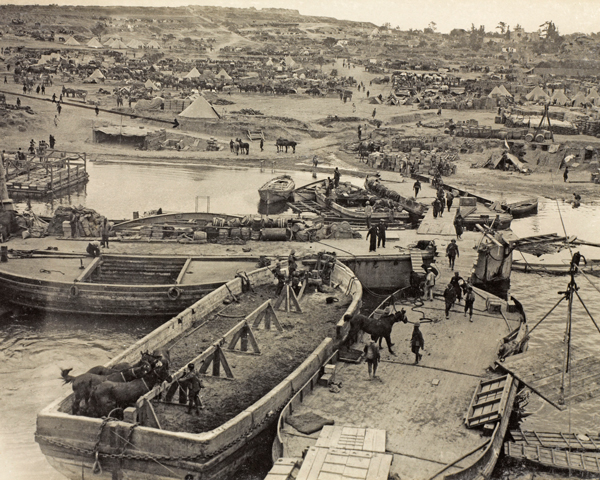
|
|
|
|
Tiger Crazy posted:What were the landing boats like at Gallipoli? It doesn't seem that there was a boat similar to the Higgins boats. It was usually just normal ship lifeboats rowed ashore.
|
|
|
|
What gets me every time is that one dumb general who just landed with his troops on a contested beach, ignoring all warnings, and then promptly got mowed down by Turkish MGs
|
|
|
|
6.2 Countermeasures (Ripped from A Radar History of World War 2 by Louis Brown) Part 2/? It was Fighter Command, trained and skilled in the use of radar, that made first use of a radar-spoofing device. Moonshine was TRE's first offensive interference. It responded to a Freya interrogation by returning a much stronger echo, thereby giving the radar operators the appearance of a large formation. It was first used mounted in an otherwise useless two-man fighter, the Boulton-Paul Defiant; it was first used operationally in a feint to cover the US 8th Air Force's debut in a daylight raid on Rouen on 17 August 1942 and remained in service for another two months, after which the ruse no longer deceived with assurance and was set aside to be brought out again for the invasion. Bomber Command's first active countermeasures were undertaken unexpectedly and wrongly by the flight crews. This also initiated Bomber Command's greatest electronic weakness, one in which it persisted for two more years - filling space with unnecessary radiation. If their commander was not alert to the need for countermeasures, the flight crews were. They knew by then that Flak was radar controlled, at least in part; they also knew that it could be deadly accurate. In their informal discussions, the flight crews came to the conclusion that the IFF Mark II, which should have been switched off when away from possible interrogation by Allied radar, worked as an anti-Wurzburg jammer, if left switched on. In this, the desperate crews followed the paths of others having terminal diseases and who seek delusive cures, bashing their faith on the statistics of small numbers highly skewed by the selection effects in acquiring them. Astoundingly, the Command found no harm in this, which was true inasmuch as none of the German sets of the time were interrogating on wavelengths to which IFF Mark II responded and hence the transponder emitted no radiation or did anything else, but they compounded this foolishness by permitting the installation of a switch, called the J-switch, that caused the set to transmit even when not interrogated! The object of this was to boost morale by showing understanding for the crews' anxieties; fortunately for them it came too early to become the delight of the newly organizing Y-Dienst, but it destroyed any remaining air crew respect for the value of radio silence, although it also removed the last resistance of Bomber Command to the use of active countermeasures. Active airborne jamming of the German 2.4 meter air warning equipment, at the time restricted to Freya but soon to include Wassermann and Mammut on the same wavelength, took the form of the TRE-designed Mandrel, first used during the night of 5/6 December 1942. By June 1943, the activities of Y-Dienst were known, and Mandrel's utility as a jammer had to be weighed against its disservice as an alarming beacon. Various modifications in its use never resulted in a suitable balance between the two. The hope that Mandrel would prevent the Himmelbett Freya from directing the Wurzburg GCI onto the bombers proved illusory when there were so many bombers that the Wurzburg could locate a target unassisted. Another device, called Tinsel, went along with Mandrel. It was simply a slight modification of the communication transmitter tuned to the German night-fighter-control radio frequencies and modulated by a microphone that picked up engine noise, the first of many attempts to disturb the German pilots' communication with their controllers. The radar designers wanted to do more than just interfere with enemy electronics, and they did this by furnishing two unfortunate pieces of equipment: Boozer and Monica. The former was a passive receiver for German radar signals that set off a warning alarm for the crew, the latter a small radar in the tail to warn them of the approach of a night fighter. Neither remained welcome for long aborad the aircraft. There were soon so many radar emissions over and on the way to Germany that Boozer continually gave alarms to crews perplexed as to what to do with the information. When Bomber Command began to enter Germany in streams rather than the earlier extended formations, Monica began to alert the crews about the presence of nearby bombers. The Germans extracted Monica from a grounded bomber, and night fighters began to home on it with the simple receiver Flensburg. Not all inventions help.
|
|
|
|
Cessna posted:The Higgins Boat - a boat with a ramp that could be driven to the beach - wasn't developed until the late 1930s. It was a copy of Japanese Daihatsu Landing Craft which was developed the late 1920s and used in the 1930s: So pretty much the same thing that was used when landing troops 200 years earlier. I should have expected not much changed going into WWI much like the rest of the war.
|
|
|
|
Tiger Crazy posted:So pretty much the same thing that was used when landing troops 200 years earlier. I should have expected not much changed going into WWI much like the rest of the war. buh?
|
|
|
|
Cessna posted:The Higgins Boat - a boat with a ramp that could be driven to the beach - wasn't developed until the late 1930s. It was a copy of Japanese Daihatsu Landing Craft which was developed the late 1920s and used in the 1930s: Eh, a copy is overstating the influence. There's a clear through line of swamp boat to LCPL to LCPR, with only the last one taking the ramp from the Daihatsu. It'd be like calling the Bf-109 a copy of the Dewoitine D.500 because they took the concept of moteur-canon.
|
|
|
|
Tiger Crazy posted:So pretty much the same thing that was used when landing troops 200 years earlier. I should have expected not much changed going into WWI much like the rest of the war. The tank and the air plane, among a lot of other things, would like a word please.
|
|
|
|
I am talking about WW I not WW II. There were no tanks preforming amphibious landings at Gallipoli. It seems like the first use of tanks in an amphibious landing is at the Dieppe raid. From those picture posted at Gallipoli they are still using longboats and launches to get men ashore. This is what was used in the age of sail as well. Hell even the large boat just has a one man ramp that is going down to the beach. Which is similar to what they did to get horse off ships. The technology for landing craft doesn't seem change until WWII with Japanese landing craft and the Higgins boats.
|
|
|
|
I was genuinely unaware that the Japanese had proper landing boats.
|
|
|
|
Jobbo_Fett posted:6.2 Countermeasures (Ripped from A Radar History of World War 2 by Louis Brown) Part 2/? Just wanted to say this is some cool poo poo and I'm enjoying it. The age-old dilemma between jamming and EMCON is a fascinating one.
|
|
|
|
They used Y-Lighter barges as well when they could in the 1st World War.
|
|
|
|
|
Dr. Demento Memoriae.
|
|
|
|
Lawman 0 posted:I was genuinely unaware that the Japanese had proper landing boats. The only reason I knew this was due to playing way too much Battlefield 1942 back in the day.
|
|
|
|
Relevant to my interests, 3 HOURS of Napoleon's Marshals (All Parts). Youtube is now far surpassing made for TV documentaries.
|
|
|
|
Comstar posted:Relevant to my interests, 3 HOURS of Napoleon's Marshals (All Parts). Youtube is now far surpassing made for TV documentaries. nah
|
|
|
|
The British did have a kind of proto-landing craft at Gallipoli. Called the X Lighter, it was closer in size to an LCT than the LCVP. They were flat-bottomed, had a curving bow and a ramp to bridge the gap between ship and shore. They could carry troops (up to 500 men), horses, guns or supplies, with some being given tanks to carry water or fuel. Some 200 were built, with most serving at Gallipoli, where nine were lost. They also used the collier River Clyde as a proto-landing ship, filling her full of troops and ramming Cape Helles. However, she didn't have a ramp at the bow - the plan was to use a barge to bridge the gap to the shore. However, she grounded too far out, and the barge was in the wrong place to allow the troops to land. Another method of getting ashore had to be improvised, while under fire from Ottoman guns. This delay resulted in heavy casualties amongst the troops aboard, especially since River Clyde had no easy way to suppress the Ottoman positions. The first plan to use tanks in an amphibious landing came in WWI as well, as part of a plan to land on the Belgian coast during the 3rd Battle of Ypres. The plan called for troops to be landed around Ostend from three giant pontoons, pushed by monitors. Each pontoon (plus the two monitors pushing them) could carry an infantry brigade, four artillery pieces and three tanks. The pontoons were produced, and the 1st Infantry Division allocated to make the assault. However, the ground offensive bogged down around Passchendaele, meaning that the amphibious operation was delayed until the onset of bad weather in the autumn led to its cancellation.
|
|
|
|
I for one enjoyed their series that covered the wars, you are just a stick in the mud grouch.
|
|
|
|
|
I would rather watch Lindybeige than anything by the History channel
|
|
|
|

|
| # ? Apr 25, 2024 05:11 |
|
Alright, explain to me why that series was wrong because I saw through all of the Napoleonic Wars stuff and it was pretty on and to the point with the play by play of the battles and time line stuff. Aside from the dumb name of the production company and the Wikipedia asset info graphics I legit cannot see the reason for your complaints now.
|
|
|
|








 Yes, it's like a lava lamp.
Yes, it's like a lava lamp.



